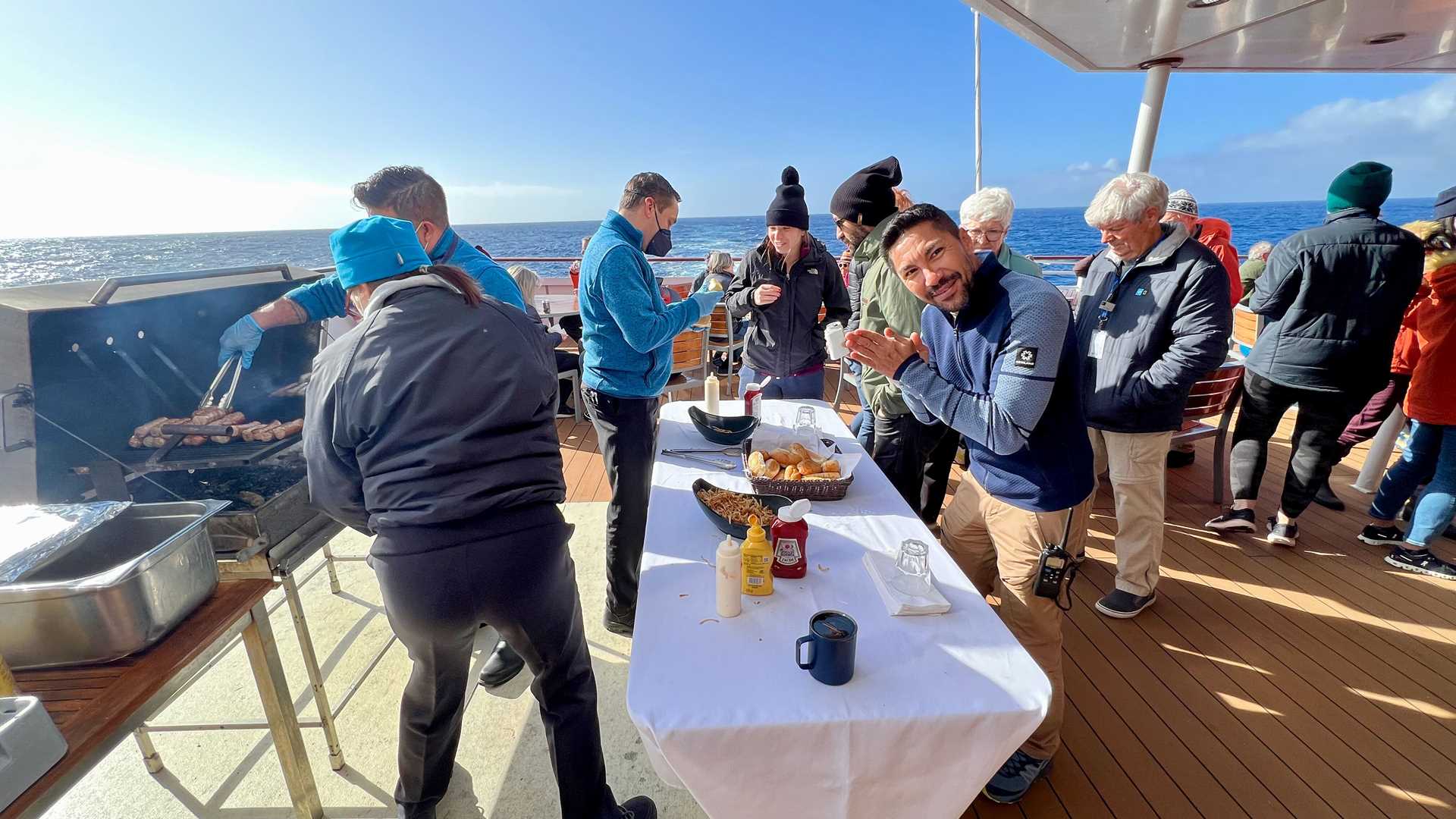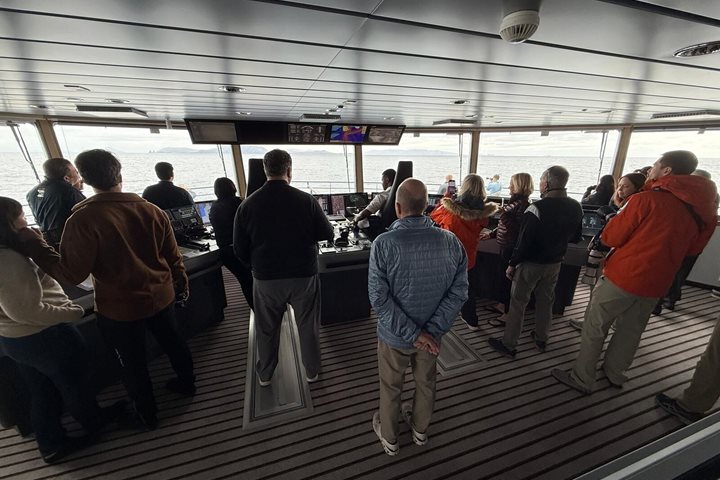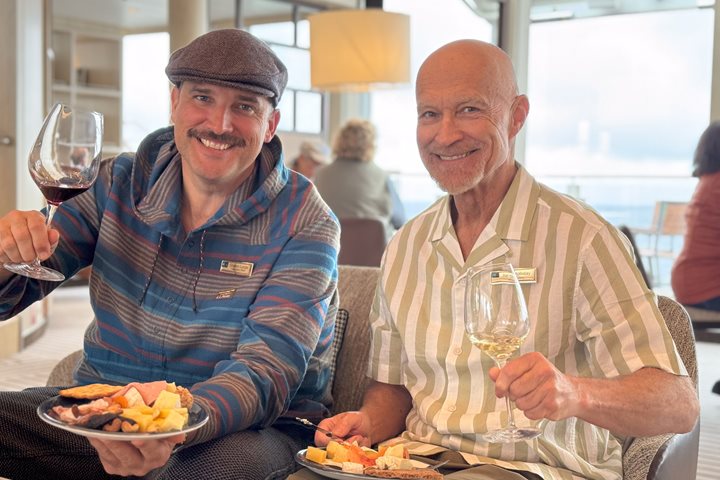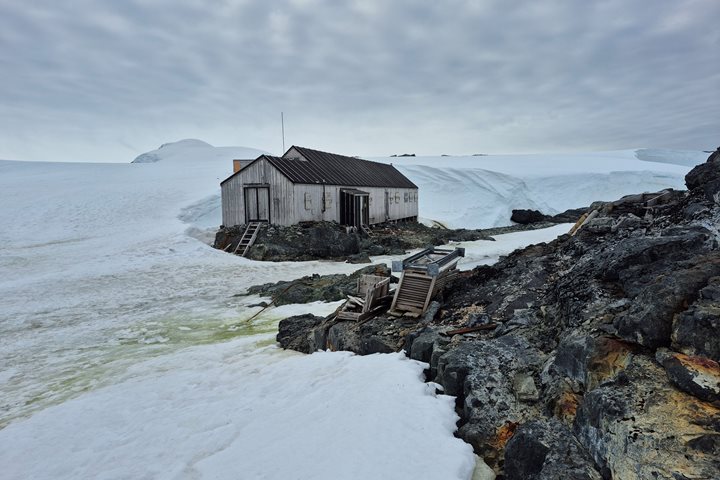Today we are closing in on the Antarctic Circle. The day is full of sun and blue skies with patches of lovely white clouds. The day is so nice that it is decided that we should have a deck barbecue! And what goes best with the Antarctic Circle? Why, hotdogs of course! Well, high-class hotdogs. Yes, there are also vegan, vegetarian, and gluten-free offerings. No one is left out. A big thanks to the Hotel Team!
Now we need to get prepared for tomorrow’s landing south of the Circle with a round of decontamination. We certainly do not want to introduce anything non-native to Antarctica.
Every day is a big day on National Geographic Explorer, including a day at sea. Aside from the above-mentioned activities, there are lectures, delicious meals, and an evening cocktail party hosted by Captain Peik Aalto.







